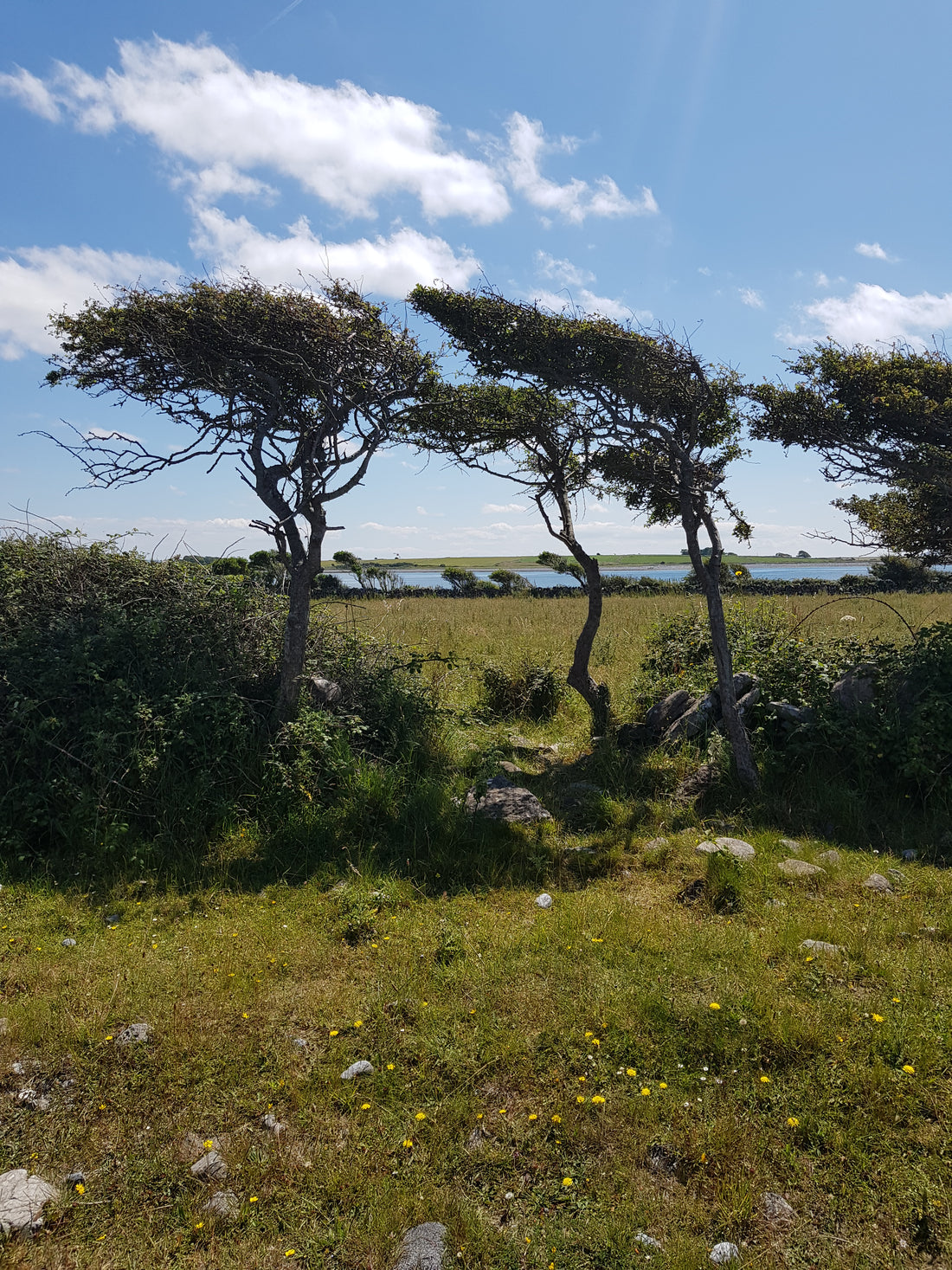Lots of gardeners have to deal with windswept conditions, some in exposed coastal sites or inland areas that have no shelter or even sites that are somewhat protected but weather along the lines of what’s promised presents us with a challenge. Thankfully there are a great selection of plants to provide solutions for lots of different scenarios, whether it’s coastal conditions or inland whether you’re growing plants in beds or containers or on a balcony or a selection of plants for your front door. If practical, providing shelter to protect your garden can create a first line of defence - this might be in the form of a hedge or some trees to help filter the wind and protect the plants within the confines of your garden. Some suitable hedging plants that a lot of coastal gardeners will most likely see in their surroundings include Griselinia, an excellent coastal hedge that’s evergreen and will tolerate partial shade and damp conditions. Griselinia grows reasonably fast and is a reliable hedge that takes clipping extremely well and can be kept very neat if required. It has a nice apple green or soft lime green colour and is hardy to around -8 or -9 so no concern in coastal areas but could suffer in very inland areas with a very hard, prolonged cold spell - somewhat unlikely but has happened before, but certainly one of the nicest evergreen coastal hedges. Or perhaps Elaeagnus - ideal for inland and coastal areas, salt wind tolerant and hardy to -15 and will grow well in exposed windy conditions with a dense bushy habit and a silver colour on the back of the leaf. If you were considering some trees for a windy area you wouldn’t go wrong with the likes of Crateagus Paul’s Scarlet - the flowering hawthorn tree, or a Weeping Ornamental Pear, lots of Sorbus do well in windy conditions or for something different Arbutus unedo - the Strawberry Tree - A small to medium-sized, slow-growing evergreen tree or large shrub, creamy-white urn-shaped flowers, followed with nice red berries that resemble a strawberry fruit - they’re edible but not at that tasty - and it also has an attractive bark, so will give you year round interest. For smaller plants to consider for beds and containers that are well suited for windy areas - grasses tend to do very well and a very popular grass is Stipa Tenuissima or Pony-tail grass a compact, evergreen ornamental grass it’s very low maintenance, drought tolerant and is rarely affected by pests and diseases. Allium Cristophii is one of the most dramatic looking Alliums, available as a bulb at this time of the year and you can plant it in large drifts in sunny, exposed borders among ornamental grasses, a perfect partner to the pony tail grasses. Nepeta or Catmint is another excellent choice for windy areas it has grey-green foliage and lavender-like flowers, great for bees and very easy to grow - sometimes used as an alternative to lavender - lots of different varieties to choose from Walkers Low and Six hill giant are two tried and tested varieties. Cordylines are another very popular choice for windy and coastal locations with lots of different varieties to choose from - Lime passion is a new variety with green and gold colouring - perfect for pots or beds. Phormiums have a similar appearance to Cordylines with strappy leaves and are also a great choice for exposed sites and come in lots of different colours. Winter and Spring flowering Heathers are tough enough to take a good blast of wind, pink, red and white flowering varieties and different foliage colours help make contrasting planting schemes. Also worth considering are some low growing bulbs - dwarf Daffodils like Tete a Tete or some dwarf Tulips like Red Riding Hood, well able to stand up to windy conditions and ideal to grow in beds or pots - they can make a great combination in a pot with Cordylines for year round colour and your bulbs providing a welcome addition of flowers in Spring. So whatever the weather might throw at us or if we are in areas that have fairly continuous windy conditions there are solutions that can provide shelter and add interest to our gardens.
A few jobs for the week ahead;
- Planting winter onions and garlic now in beds and containers will provide you with some tasty homegrown produce for next year - easy to grow and really tasty
- Autumn is an ideal time to sow Wildflower Seeds, prepare the ground in advance for best results by removing weeds and grass
- You can plant Autumn Seed Potatoes now for a harvesting in the Winter - you could have new spuds for Christmas dinner
- Set your lawn up for the winter with some Autumn Lawn Feed and consider scarifying and aerating the lawn
- Plant up your spring flowering bulbs - Snowdrops, Daffodils, Tulips, Bluebells, Alliums in lots more varieties - great for pots and beds

